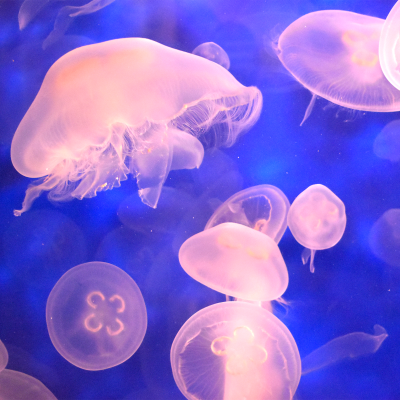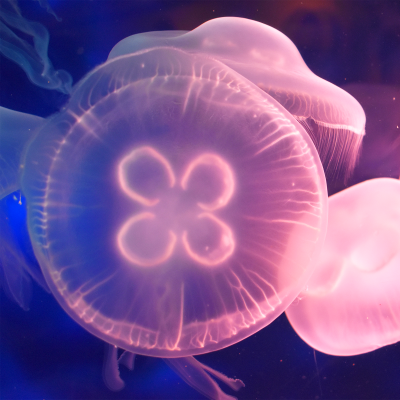About Moon Jellies
The moon jelly has a bell that reaches 15 inches in diameter. The bell is usually clear and can occasionally be seen with a pink hue if the jelly has been feeding on crustaceans. If the bell has an orange hue the jelly has been feeding on brine shrimp. Brood pockets in the oral arms of the jellies may appear bright reddish-orange, due to the color of the developing larvae. The gonads are clearly visible as a white four-leaf clover shape along the top of the bell.
The nervous system of jellyfish is very basic. At the edge of the bell, there are light-sensing organs (ocellus) and gravity-sensing organs (statocysts). Therefore, they can sense light and dark and they can orient themselves within the water column.
Jellies are passive hunters that capture their prey using tentacles as nets. These tentacles have millions of microscopic nematocysts. The nematocysts act like tiny harpoons that release when they come into contact with prey. The ends of the nematocyst may have a toxin that is used to aid in paralysis or death of the prey (but is not harmful to humans). Once the prey is captured by the tentacles, the prey is transferred to an oral arm. Next, cilia move the prey up the arm and into the mouth of the jellyfish. Lastly, the food is moved from the mouth into one of the four stomach pouches where it is digested.
Moon Jelly at the Akron Zoo
Moon jellies are located in Curious Creatures at the Akron Zoo.



